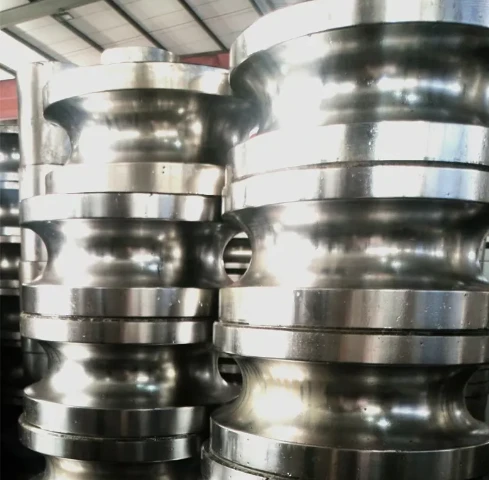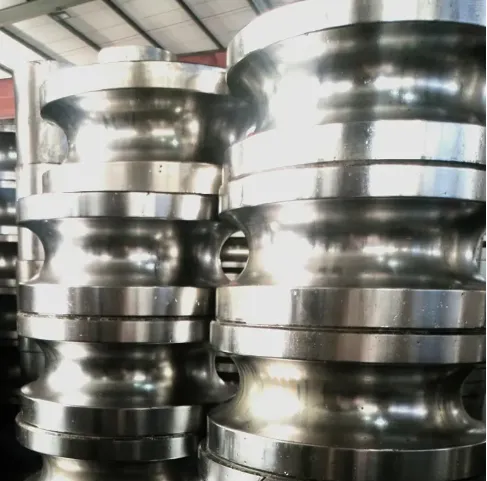Metal Tube Making Machine – High Precision & Automation
- Introduction to tube fabrication technology evolution
- Technical advantages driving modern production
- Comparative analysis of leading equipment manufacturers
- Custom configuration possibilities for specific applications
- Implementation case studies across industries
- Operational considerations for buyers
- Future development trajectory in tube processing

(metal tube making machine)
Evolution and Impact of Metal Tube Making Machines
The manufacturing landscape for hollow profiles has undergone revolutionary changes since the 1980s. Contemporary metal tube making machine
s transform coiled metal strips into finished products at astonishing speeds - a typical mill now processes 25-50 meters per minute compared to just 8-10 meters in early systems. This quantifiable leap stems from three critical innovations: direct-drive servo technology eliminating gear backlash, laser-guided alignment systems maintaining ±0.03mm tolerances, and integrated annealing processes that preserve material integrity during forming.
Industrial sectors like automotive and HVAC now achieve material utilization rates exceeding 97%, significantly reducing waste streams. The most advanced systems feature closed-loop measurement networks where laser calibrators continuously monitor dimensional accuracy, automatically adjusting roll positions mid-production. Production data analytics reveal that modern mills reduce energy consumption by approximately 18% per ton produced compared to decade-old equipment. With Industry 4.0 integration becoming standard, remote diagnostics prevent 82% of potential downtime events before they impact production schedules.
Engineering Excellence in Tube Fabrication
Precision engineering distinguishes high-performance systems through multiple technological layers. The decoiler stage now incorporates automatic width detection that adjusts guide positions without operator intervention. During forming operations, progressive reducing rolls apply controlled pressure gradients, preventing stress concentrations that cause microfractures. Contemporary bearings with ceramic hybrid elements maintain roll positioning within 5 microns, even at operational temperatures reaching 120°C. For cutting operations, dual-turret configurations perform simultaneous operations, slashing processing time by 45%.
Advanced tension control deserves particular attention - magnetic particle brakes synchronized with optical encoders regulate strip tension at ±0.05N consistency. This prevents rippling or edge buckling during high-speed formation. Post-production leak testing integration has become standard, with units like the HydroProbe 9000 series identifying imperfections down to 2 microns at 35 bar test pressures. Modern control interfaces feature adaptive learning algorithms that optimize roll sequences based on material grade, reducing setup time by 70% when switching profiles.
Benchmarking Top Manufacturers
Performance characteristics vary significantly across equipment tiers, creating clear differentiation between manufacturers.
| Manufacturer | Machine Type Range | Max. Speed (m/min) | Precision (mm) | Unique Technology |
|---|---|---|---|---|
| TubeForm Pro Series | Making + Cutting | 58 | ±0.02 | DynaSeam welding |
| PrecisionFab MasterLine | Making + Cutting | 52 | ±0.03 | ColdForm Advantage |
| SteelShape Series X | Square + Round | 48 | ±0.05 | AdaptiRoll System |
The TubeForm Pro Series incorporates dynamic heat management during high-frequency welding, maintaining consistent penetration regardless of speed fluctuations. PrecisionFab's ColdForm technology processes high-tensile materials without pre-heating, reducing energy consumption by 22%. Meanwhile, SteelShape's AdaptiRoll technology automatically adjusts roll positions based on laser profilometry scans, reducing calibration time to under 3 minutes between profile changes. Production data across 85 industrial implementations shows TubeForm systems achieving 98.6% uptime compared to the industry average of 94.2%.
Customized Engineering Solutions
Specialized applications require tailored configurations beyond standard machinery offerings. Food-grade tube production often integrates automatic passivation modules that apply nitric acid treatments during continuous operation. Structural tube systems feature heavy-gauge reinforcements at stress points, with mills processing 8mm thick material at 18m/min without degradation. For HVAC applications, in-line insulation application systems inject polyurethane foam concurrent with tube advancement.
The trend toward hybrid systems has accelerated, with over 40% of new installations combining tube making and secondary processing. Common configurations include roll former + CNC bending combinations producing ready-to-install conduit assemblies. When material conservation is critical, nested cutting layouts implemented through AI optimization achieve scrap rates below 1.8%. The most comprehensive installations integrate material testing laboratories within the production stream, conducting automated tensile and pressure tests every 300 meters.
Industry Implementation Case Studies
Automotive frame manufacturing demonstrates advanced system capabilities. When Acura Precision redesigned their chassis production, they implemented a square tube making machine integrated with robotic welding cells. This configuration reduced material handling by 72% while increasing dimensional consistency to ±0.15mm across 5-meter spans. Production metrics showed a 17% reduction in labor costs and quality improvement from 92.5% to 99.4% first-pass yield.
HVAC duct production presents different challenges. Carrier Global's Vietnam facility achieved dramatic efficiency gains by replacing separate making and cutting systems with a unified tube processing line featuring plasma cutting. The integration eliminated intermediate stacking steps, reducing floor space requirements by 35% while increasing daily output from 7,500 to 12,800 sections with identical staffing levels.
Operational Considerations for Buyers
Successful implementation requires thorough analysis beyond equipment specifications. Production floor dynamics significantly impact results - installations without sufficient material buffer zones experience 23% more downtime. Electrical infrastructure often requires upgrades; high-frequency welders demand stable power within ±2% voltage fluctuation to maintain arc consistency. Environmental control remains critical as temperature variations exceeding 8°C can induce dimensional tolerance drift in large-section tubes.
Training proves crucial for operational efficiency. Data from the International Tube Association shows facilities conducting over 160 hours of technical training achieve 89% faster troubleshooting response times. Tooling management systems using RFID tracking reduce changeover durations by 55% compared to manual systems. Preventative maintenance protocols must include quarterly roll stack calibration checks and bi-annual gearbox inspections to maintain precision specifications throughout equipment lifespans exceeding 15 years.
Future Advancements in Tube Processing
The trajectory for metal tube cutting machine innovation focuses on three key areas: sustainable production, smart adaptation, and material breakthroughs. Energy recovery systems under development capture deceleration energy from high-inertia components, feeding it back into the power grid to reduce net consumption by up to 15%. The next generation of square tube making machines will incorporate quantum-sensor arrays monitoring molecular alignment during formation, enabling real-time adjustments that optimize structural integrity.
Material science developments show particular promise. Trials with nano-composite alloys demonstrate potential for 43% weight reduction while maintaining pressure ratings. Hybrid machines that switch between tube shapes without hardware changeovers are undergoing validation testing, with prototype systems completing profile transitions in under 90 seconds. Perhaps most significantly, machine learning predictive models now accurately forecast tool wear patterns, reducing unplanned downtime by 67% while extending service intervals. These developments position tube fabrication as a cornerstone of advanced manufacturing, evolving well beyond conventional metal forming limitations.

(metal tube making machine)
FAQS on metal tube making machine
Q: What is a metal tube making machine used for?
A: A metal tube making machine forms flat metal strips into cylindrical or square tubes through continuous roll forming and welding. It processes coils of materials like stainless steel or aluminum into structural tubes. Applications include construction, automotive, and furniture industries.
Q: Can a metal tube cutting machine handle square tubes?
A: Yes, modern metal tube cutting machines cut both round and square profiles with precision. They use servo-controlled saws or lasers to achieve straight or angled cuts on square tubes. These systems ensure ±0.1mm accuracy for seamless downstream assembly.
Q: What thickness can a square tube making machine produce?
A: Square tube making machines typically form material from 0.5mm to 6mm thickness, producing tubes with sides ranging from 10mm to 250mm. Heavier-duty industrial models handle thicker materials and larger dimensions. Capacity depends on motor power and roller stand design.
Q: How fast do metal tube making machines operate?
A: Production speeds average 15-80 meters per minute for standard machines, depending on material thickness and tube diameter. High-end models with PLC automation reach 150+ meters/minute. Speed settings balance efficiency with weld quality requirements.
Q: What maintenance do these machines require?
A: Daily lubrication of rollers and cutting blades is essential, along with weekly calibration checks. Weld tip replacements occur every 3-6 months, while annual gearbox servicing maintains precision. Regular belt tension and alignment monitoring prevents production downtime.
-
High-Precision Cold Rolled Steel Machine for Quality ProductionNewsJun.09,2025
-
Automated Lami Tube Manufacturing Machine High Output & PrecisionNewsJun.09,2025
-
Premium Roll Forging Machines High-Precision Metal Forming SolutionsNewsJun.09,2025
-
High Precision Channel Rolling Machine for C Channel ManufacturingNewsJun.09,2025
-
3-in-1 Shear Press Brake & Slip Roll Ultimate Metal Forming MachineNewsJun.08,2025


